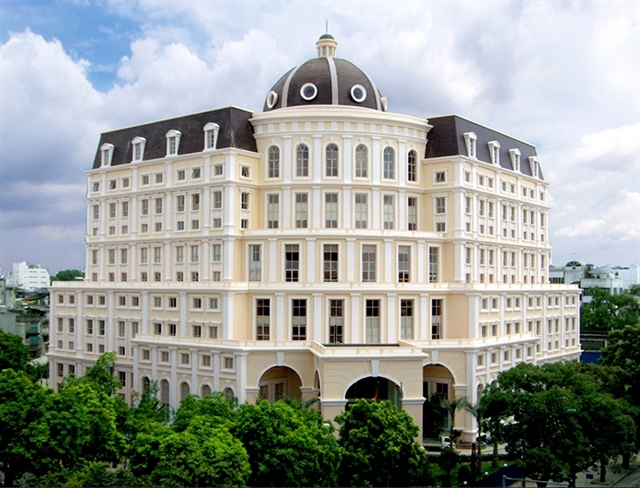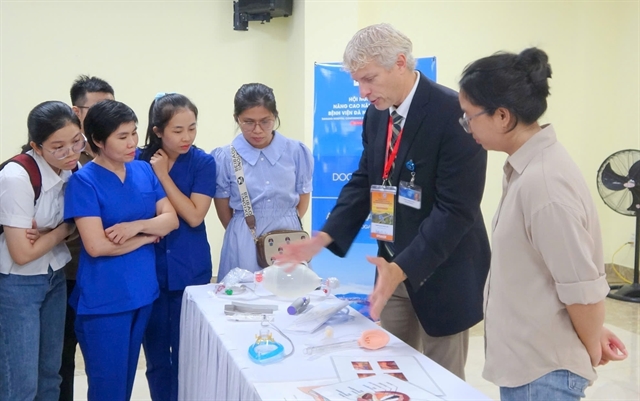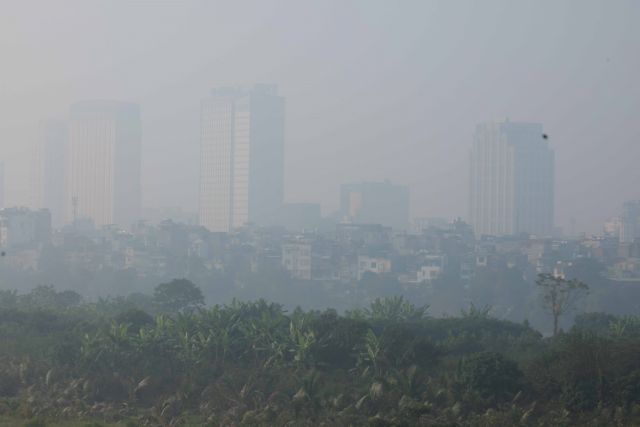 Sunday/Weekend
Sunday/Weekend

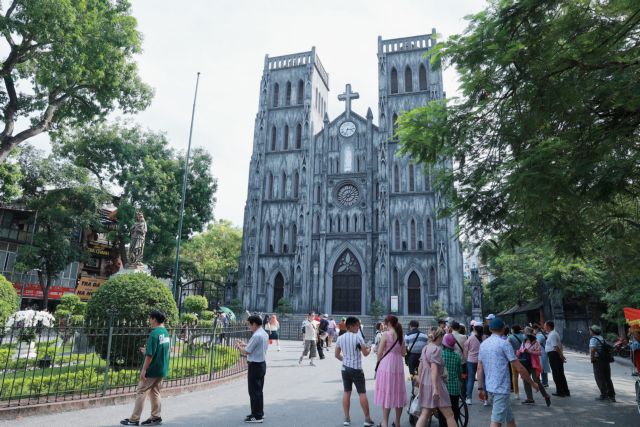 |
| St Joseph Cathedral on Nhà Chung Street is among iconic landmarks of Hà Nội. VNS Photo Trương Vị |
By Đinh Thuận
Serving as the cultural centre of the capital Hà Nội, it's not too much of a stretch to say that the city's Old Quarter serves as the spiritual heartbeat of the nation itself.
With the thrum of traders and its faded French colonial buildings, the area is a piece of living history, and it goes without saying that local authorities want to do everything to preserve its distinct and storied heritage.
The People’s Committee (or Administration) of Hoàn Kiếm District has exerted efforts and taken numerous measures to conserve and highlight the unique historical, religious and architectural heritage of the Old Quarter, contributing to developing its tourism and culture industries.
The Old Quarter, spanning 82 hectares including all 10 wards of Hoàn Kiếm, is a treasure trove of history, architecture and culture in general.
 |
| Tourists are seen on Tạ Hiện Street. VNS Photo Trương Vị |
It is known for its ancient cultural heritage, associated with the formation and development of the royal capital city of Thăng Long, now Hà Nội, as well as a range of handicraft and trade activities making up guilds featuring the peculiarities of the capital’s residents.
Hàng Bạc Street is renowned for its silver jewellery that was introduced by migrant craftspeople from Châu Khê and Đồng Xâm in Hải Dương and Thái Bình Province respectively, whereas Hàng Thiếc Street is famed for its metal-work, and Lãn Ông Street for its traditional medicine.
The Old Quarter extends itself over 79 streets and is bordered by Hàng Đậu Street in the north, Phùng Hưng Street in the west, Trần Quang Khải and Trần Nhật Duật streets in the east, and Hàng Bông, Hàng Gai, Cầu Gỗ and Hàng Thùng in the south.
As many as 121 temples, pagodas and shrines can be found in the quarter, along with hundreds of historic sites, including more than 200 of special heritage value, like the ancient house at 87 Mã Mây Street, the Đồng Lạc Communal House and Bạch Mã Temple.
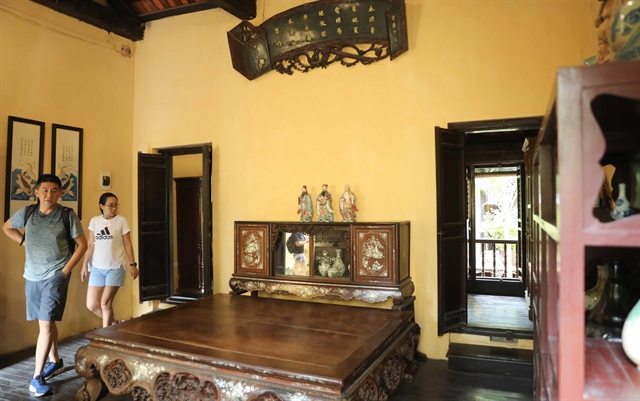 |
| Inside the ancient house at 87 Mã Mây Street. VNA/VNS Photo Thanh Tùng |
Intangible cultural values
In addition, Hà Nội's Old Quarter contains a diverse range of intangible cultural values, from the daily life of its residents to its culinary culture, folk arts, and traditional festivals. Based on these values, it was recognised as a National Historical Site in 2004.
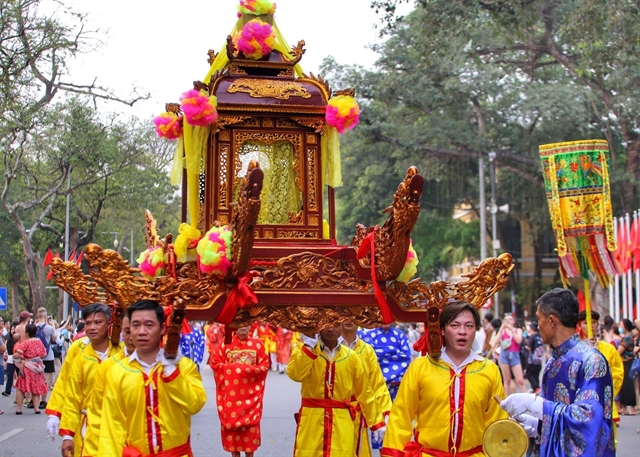 |
| A palanquin procession at Kim Ngân Communal House Festival held in Hà Nội in April. VNA/VNS Photo Tuấn Đức |
The Old Quarter, encompassing the French Quarter, is characterised by many impressive and stunning French-style mansions and villas, located along the shady tree-lined streets that were laid out in an order similar to a chessboard.
French city planners in the early 20th century combined Western architecture with local climatic conditions to create a unique urban space, giving Hà Nội a distinct character like no other city in Southeast Asia. This blend of architectural styles has created a one-of-a-kind urban environment that is truly unique to the capital.
According to Prof Hồ Sĩ Quý, former director of the Institute of Social Sciences Information at the Việt Nam Academy of Social Sciences, Hà Nội was greatly influenced by and adopted French culture and civilisation for over half a century, which has shaped its current urban identity.
However, over time, the architecture of the city has blended harmoniously between the 'classical, grandiose' features of Europe and the historical values that have been preserved by the city's native people and culture.
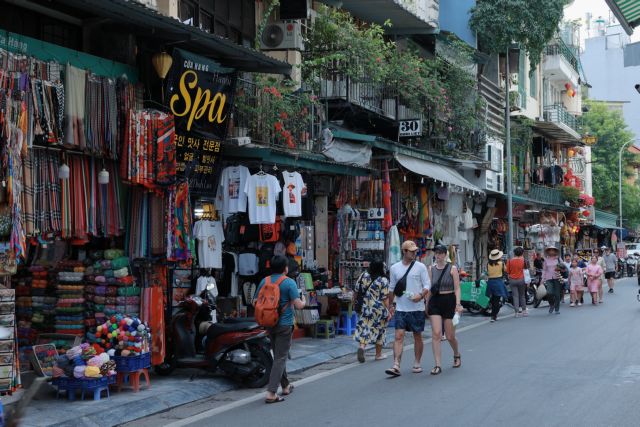 |
| International tourists are seen visiting Hà Nội's Old Quarter. VNS Photo Trương Vị |
The cultural and social values of the Old Quarter have become a resource for Hà Nội in general, and Hoàn Kiếm in particular, to effectively develop tourism.
However, the development requirements of a modern city pose significant challenges to those values.
Hoàn Kiếm’s authorities have paid special attention to restoring and embellishing 22 monuments and 24 ancient houses. The urban technical infrastructure system has also been upgraded.
The implementation of a project to restore festivals in the Old Quarter shows Hoàn Kiếm's efforts in conserving intangible cultural heritage. The district has restored 14 festivals, including seven district-level and seven ward-level festivals.
Renovating architectural relics
The role of residents in protecting cultural heritage has been encouraged, while a cooperation mechanism between the community, businesses, and the local authorities in managing, conserving, and enhancing cultural heritage value has been set up.
Trần Thúy Lan, deputy head of the management board of Hoàn Kiếm Lake and the Old Quarter, said her agency regularly organised cultural and art programmes and other activities at heritage sites in the district, focusing on introducing the lifestyle of Hanoians, restoring the Jewellery Festival, arranging traditional music performances, and introducing traditional craft villages and craft streets.
"These programmes all have seen the active engagement of the community, contributing to the work in a sustainable and long-term way," she said.
Resources have been focused on renovating structures left over from the French colonial period, such as the Hoàn Kiếm District police headquarters on Tràng Thi Street, the Cửa Đông ward police headquarters on Nguyễn Quang Bích Street, and the Trưng Vương Secondary School on Hàng Bài Street.
 |
| Trưng Vương Secondary School on Hàng Bài Street still preserves French-style architecture. Photo thcstrungvuong.hoankiem.edu.vn |
Conservation projects have given a facelift to architectural works in the Old Quarter, thereby introducing and promoting the heritage value of Hà Nội to the people.
Currently, Hoàn Kiếm District is investing in renovating the architecture and landscape of Tràng Tiền Street and giving finishing touches to a project to restore a villa at 49 Trần Hưng Đạo Street.
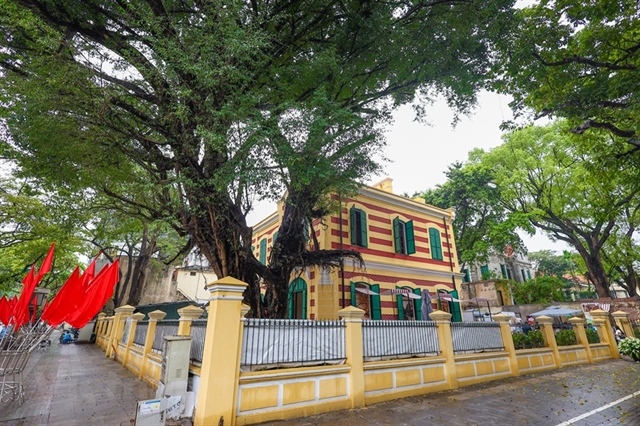 |
| Hoàn Kiếm District is giving finishing touches to a project to restore the villa at 49 Trần Hưng Đạo Street. VNA/VNS Photo Minh Sơn |
"The authorities and people of the city and Hoàn Kiếm District in particular attach great importance to and are determined to conserve and enhance the cultural heritage values of the Old Quarter, considering this as a key task and responsibility of both the authorities and the community," Phạm Tuấn Long, chairman of the People’s Committee of Hoàn Kiếm District, said.
"Conserving and restoring the cultural heritage values of the Old Quarter through specific programmes and plans have helped promote the socio-economic development in the capital, and attracted more visitors," Long added. VNS



